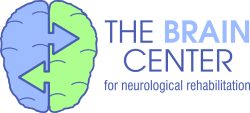People struggling with addiction often find themselves in and out of rehabilitation programs all the time. Many leaving before the treatment program is complete. It’s important to know that addiction is a physiological condition and not physiological. Addiction is in fact a brain injury that affects all aspects of a person’s life. It’s a disease that is very hard to change. People with addictions didn’t want this disease. They feel helpless, and are desperate to find new ways to manage it.
Neurofeedback can help a person be aware of triggers that often lead to harmful behavior patterns.With neurofeedback, a person can achieve the tools necessary to free themselves from the destructive cycles of addiction.
Why is neurofeedback so effective?
Neurofeedback is basically biofeedback for the brain. It’s a form of training for the brain. Neurofeedback helps the brain learn self-regulation. Self-regulation is an essential part of good brain training and particularly important with people suffering from addictions. A particular brainwave pattern that is typically seen in people with addiction, is one that shows too many fast brainwaves and not enough slow brainwaves throughout the brain. This creates a lot of “mental chatter”, making it hard for the person to quiet their mind. Many times people with this brain pattern tend to self medicate. One such way would be drinking or using certain drugs as a method to allow for self-calming.
Another common pattern seen in people with addictions is when the brain has too many slow brainwaves. This makes it very hard for the person to focus and hold their attention. These people often use over the counter stimulants like caffeine pills, chocolate, coffee, energy drinks and some medications to allow them to focus. Caffeine gives you that unmistakable wake-up buzz, though the effects are short-term. They do this in order to speed up their brainwaves and help them focus. With the help of neurofeedback, they may be able to alter their brainwaves into a more functional range and no longer need drugs to feel calm and focused.
Therapists who utilize neurofeedback therapy claim that the procedure can help normalize brain waves. This is particularly effective for people with addictions. Neurofeedback can help a person learn how to be calm, focused and relaxed. It can also allow a person to think more clearly. When you build a treatment program around sound foundational methods – all therapies work much more efficiently. Which is why addiction programs have such a high rate of success when partnered with a series of neurofeedback sessions. It doesn’t happen overnight however, it can take numerous sessions to help modify brain function (40-50 treatments on average). Having said that, neurofeedback training helps develop a solid base on which to build recovery and prevent relapse. Neurofeedback when combined with other addiction treatments can help a person finally escape the cycle of addiction.
Neurofeedback – How does it work?
To begin with, a person places a cap on their head that has 20 sensors hitched to various areas inside the cap. The cap is similar to a swimmers cap. Once on and properly placed, a conductive gel is squirted inside the cap to make sure that all 20 points are conducting properly to the skull. Once all points are shown to be conducting properly, the cap is then plugged in to a computer. This computer can now read the various frequencies that the brain is producing at any given moment. The person having neurofeedback performed on them, simply looks at a screen and responds to instructions given to them by the therapist. If the person changes his or her brain waves into the correct alignment, the computer monitor might show appealing colors or soothing music might play. If the person is distracted and not concentrating properly , no feedback is given. In fact, no reprimands are ever given – only rewards. Over time, the person can be taught how to think in ways that make the reward more likely to happen.
Encouraging Results
After participating in therapy, these therapists claim, the addicts can retrain their brains to behave normally, and in doing so they can reduce their compulsion to use drugs. There have been numerous studies with very hopeful results in this arena. For example, a study published in the Journal of Neurology showed that people who were addicted to cocaine could alter their brain wave activity through neurofeedback. They also had less cravings for cocaine at the end of drug treatment even after they were shown pictures of the drug. Before they began therapy, these pictures may have sparked cravings. After therapy they did not.

